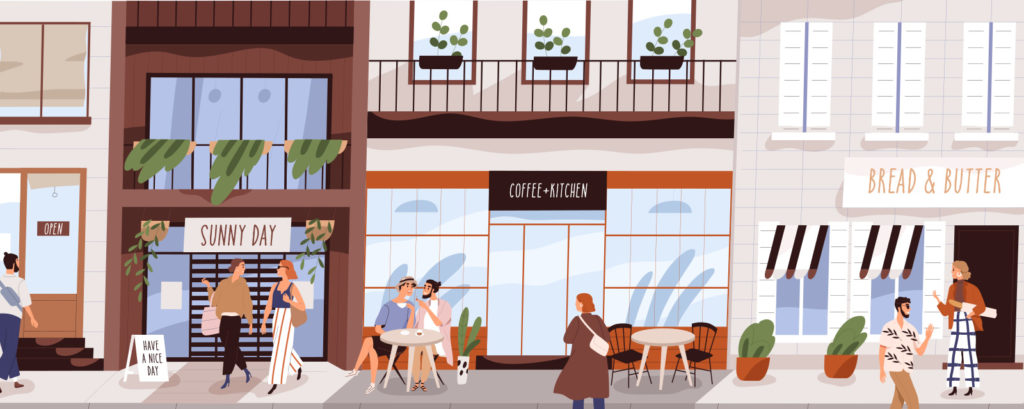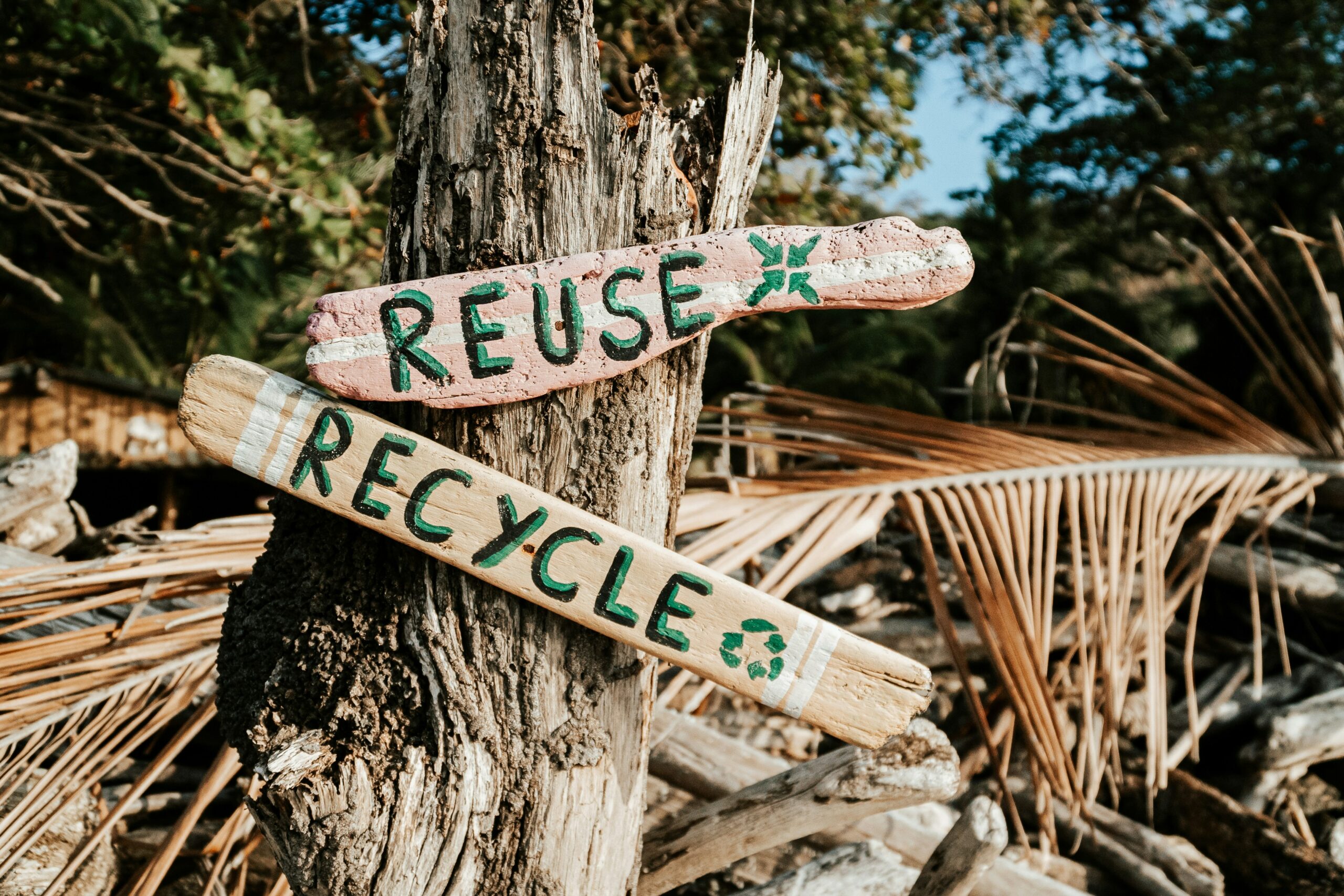YES on Measure E: San Diego Won’t Turn Into Miami Beach. Here’s Why.

It’s understandable why people might, at first glance, object to Measure E. Removing a 30-foot height limit on buildings immediately conjures up nightmarish scenarios of a San Diego coastline riddled with luxury high-rises à la Miami Beach.
But in this case, that couldn’t be further from the truth.
Measure E allows for dense, multi-use, moderately priced real estate to be built in—and only in—the Midway district.
And removing the 30-foot height limit doesn’t mean skyscrapers. In fact, the Midway Community Plan states that new buildings should be no more than five stories tall, or roughly 60 feet.
Imagine this: you drive into Midway and instead of being greeted by chaos, concrete, strip malls, and every fast food chain imaginable, you see residential buildings with thriving local businesses on the ground floor.
Boutiques, salons, local restaurants, coffee shops, and small service-based businesses line Rosecrans. Neighbors know each other and support their businesses. You know, a real community. It’s what Midway residents and business owners want and deserve for their own community—and it’s long overdue.
What is Measure E, and what does it do?
To understand Measure E, we need to go back to 1972 when San Diego citizens overwhelmingly passed Proposition D.
At the time, San Diegans were rightfully concerned about the development happening along our coastline. They worried that if left unchecked, builders would wall off coastal access and views with luxury high-rise condos.
Prop D stopped this threat in its tracks. It mandated that any development north of downtown and west of the 5 freeway was subject to a 30-foot height restriction. Huzzah!
But there was one major loser in this deal—the Midway district.
“Midway was only included in Prop D because it was easy to lump in with the coastal boundaries,” said Cathy Kenton, Chair of the Midway-Pacific Highway Community Planning Group. “It was easy for lawmakers to say, ‘Well, Midway is also west of the 5 freeway, so we guess it should be included.’”
But that was a huge mistake. Midway isn’t like Point Loma, Ocean Beach, Pacific Beach, or any other residential community in that area.
Midway is the only industrial/commercial business district in the Prop D boundary. And such districts need dense, multi-use, moderately affordable development in order to thrive.
“We can now see what nearly 50 years of this limitation applied to Midway has done,” Cathy said. Her family has owned property and businesses in Midway for over 60 years, and she has seen it stagnate for too long.
While removing the height limit for Midway makes perfect sense, Prop D stipulates that the only way to adjust the original boundaries of the law is to vote on it. Hence, Measure E.
Why you should support Measure E
There are so many misconceptions about Measure E, it’ll make your head spin.
Opponents of Measure E sound the alarm on everything from packed, coastal high-rise communities to impossible freeway access coming out of the peninsula.
Yet when we break it down and examine the facts, Measure E is not only great for Midway, but also great for its coastal neighbors and the City of San Diego as a whole.
Measure E is community-driven plan
“The most important thing to understand is, Measure E is a community-driven campaign,” Cathy said. “Midway residents went to our City Council member and said, ‘This is what our community wants. Not just for Sports Arena, not for the city-owned properties. This is what the Midway community needs in order to achieve its goals.’”
Measure E is the only bipartisan measure on the ballot this year
Measure E is the only measure on the 2020 ballot that is officially endorsed by both parties. Supporters include Circulate San Diego, Climate Action Campaign, and the Chamber of Commerce.
“Every major organization that does good in San Diego has endorsed Measure E,” Cathy said.
Measure E is NOT a slippery slope
The Midway district is unique in that it’s an industrial/commercial area badly in need of revitalization. No person who has ever driven down Rosecrans can deny this.
Still, opponents of Measure E claim that removing the 30-foot height limit in Midway is a slippery slope—that soon they’ll be coming after Point Loma, OB, and Pacific Beach in the same manner.
“That is absolutely incorrect,” Cathy said. “Trust me, I grew up in Point Loma. I don’t want to see high-rise stuff there or anywhere else. This is about Midway, and only Midway. It was only included in Prop D because, as we’ve pointed out, it was part of the general boundary area. It was a mistake.”
There are no risks of gentrification
Because there are only 1,500 residents in the primarily industrial Midway district, building new housing there does not pose the same risks of gentrification as it does in places like Barrio Logan or Sherman Heights.
“Those places have real risks of displacement for people because there are dense populations already living there,” said Dike Anyiwo, Vice Chair of Midway-Pacific Highway Community Planning Group and long-time Midway resident.
“With Measure E, we’re taking vacant lots and vacant buildings, and building moderately affordable housing there,” he said. “We’re encouraging more people to live in Midway.”
Measure E is the only way to incentivize redevelopment in Midway
Redevelopment is incredibly expensive in today’s world. Builders will not undertake redevelopment projects unless they are financially feasible. That means building dense, multi-use buildings that are built up—not out.
“Midway has always been an industrial/commercial area with no coastal access,” Dike said. “We are bounded by freeways, the river, and the peninsula. We’re a little pocket that doesn’t really conform to the spirit of the original Prop D law.”
And because of that, Midway has not been able to redevelop the way it should have.
“We have not been able to build new residential units to the degree that we need to,” he continued. “We have not been able to generate the revenue that results in the necessary investment in infrastructure—our roads, streetlights, sidewalks, and parks are severely underfunded.”
We’ll say it again: luxury high-rises have no place in Midway
“Opponents of Measure E claim that this is just an excuse to build luxury high-rises for the rich,” Cathy said. “That is not at all what we’re doing.”
The zoning limitations in the Midway Community Plan allow for buildings with a maximum 100 feet in height. What’s more, they are all multi-use zones. None of those zones are residential exclusive.
“Everything that comes into Midway is guided by our community plan,” she said. “And that document specifically says that what we want is moderate-income and affordable-income residential. We are not holding space for any luxury residential.”
Why does Business For Good support Measure E?
Business For Good fully endorses two measures on the 2020 ballot: Measure A and Measure E. These initiatives drive progress in the policy areas we focus on to create more representation, access, and opportunity in San Diego.
Juan Pablo Sanchez, BFG board member and City Heights Planning Group board member, elaborates on why Business For Good loves Measure E.
It helps the San Diego housing crisis. San Diego has very limited space remaining for new building of large housing projects, something that adds to our city’s housing crisis. But Midway has lots of usable space. “Measure E creates more moderate-income housing, and more affordable housing is good for everyone,” Juan Pablo said. “And the redevelopment itself creates family-sustaining, secure jobs.”
It improves and protects environmental health. By building up—not out—Midway’s new housing would significantly reduce city sprawl and car dependence. Among other things, this would open up land for more green spaces. “The Midway Community Plan adds new green spaces and amps up the protections for the existing ones by bringing them up to current code,” Juan Pablo said.
Midway also has huge potential to become a major San Diego transit hub.
“There’s been talk about adding a kind of Grand Central Station in Midway that would feed into the airport and around the city,” he said. “That would be fantastic, because Santa Fe Station is so limited where it is.”
The Midway Community Plan is well researched and carries weight
Community planning groups are only advisory boards. They recommend community plans to the City Council, but in the end, the Council can vote however they wish.
So, how can we be sure that luxury high-rises won’t be built? Because the Midway Community Plan says they shouldn’t be.
“Community plans heavily influence the City Council’s decision,” Juan Pablo said. “Each planning group does a ton of work and research on their plans. We’re talking years, just for one plan.”
That would give Midway’s community plan a lot of weight, forcing the City Council to really take all of their recommendations into consideration.
“If the City Council doesn’t do that, it’s bad press, it’s pushback, it’s the community against them,” he said. “So I’m sure it would be a last resort for the Council to go against the wishes of any community.”
It creates real infrastructure in Midway—real fast
Unlike established neighborhoods like North Park and City Heights where infrastructure projects must be done agonizingly piecemeal, Juan Pablo points out that Measure E would allow for building new infrastructure in Midway all at once.
“Measure E is a catalyst for a ton of money to come into Midway,” he said. “Since there’s so many vacant properties and not a lot of residential there, you can just start with a clean slate for improving sidewalks, roads, lighting, cables, what have you. Address all the problems at once.”
This is very similar to the case of Chula Vista. By redeveloping the whole city at one time, a lot of money poured in and infrastructure improvements were all completed in one fell swoop.
“And look at how Chula Vista turned out—it’s amazing,” Juan Pablo said. “It’s one of the better planned, redeveloped cities in San Diego now. Imagine it 10 years ago. You can hardly believe the change.”
